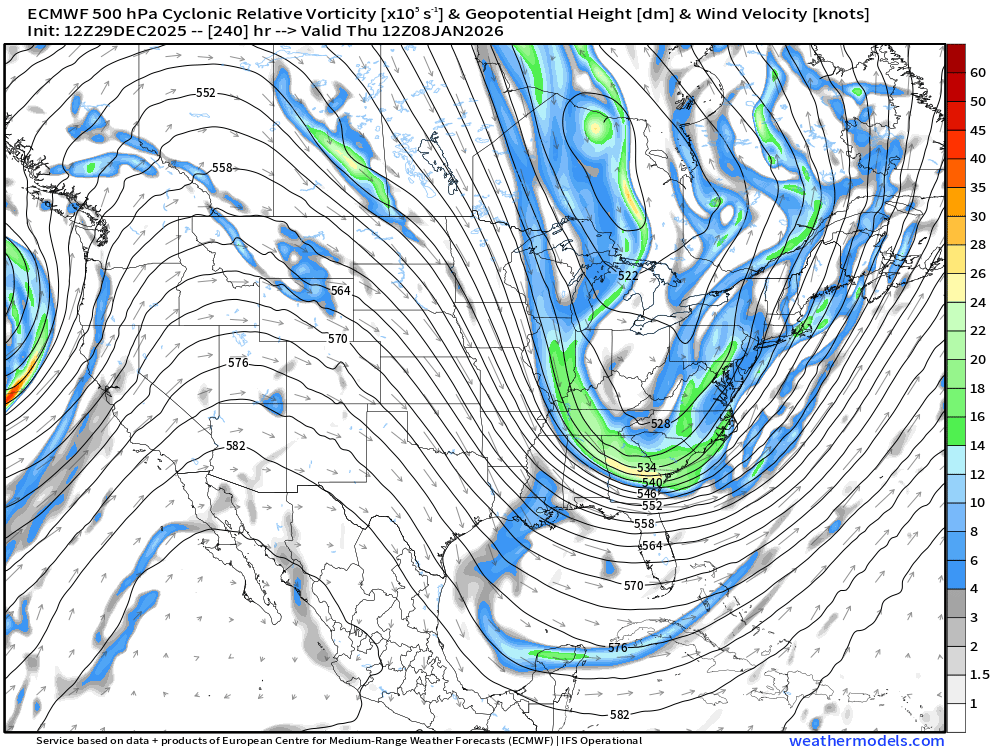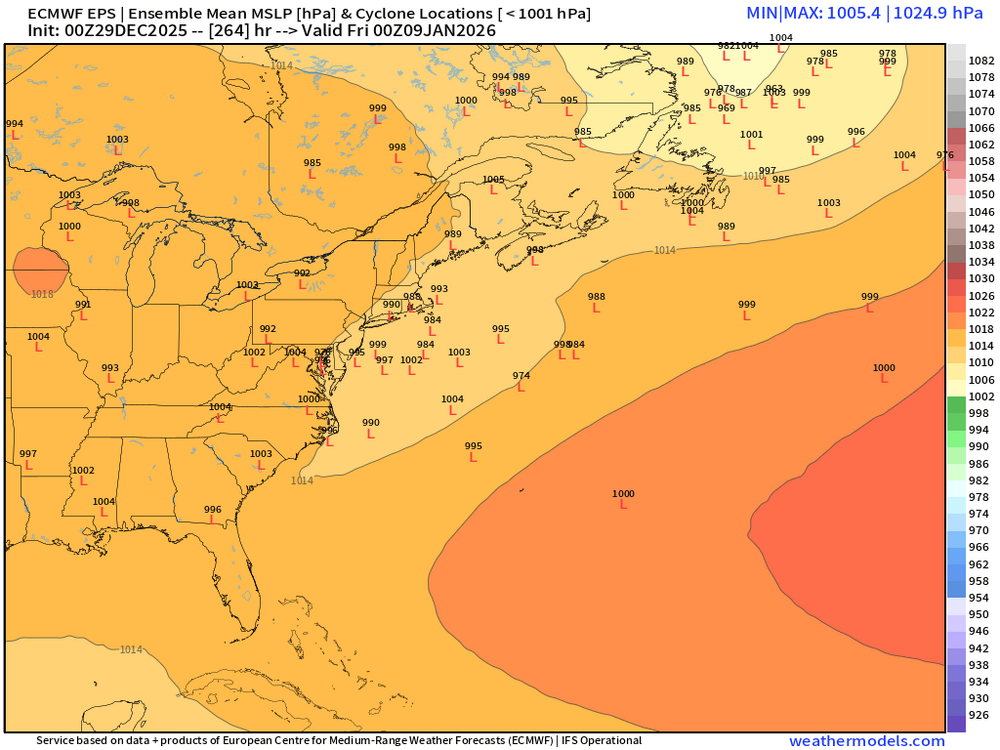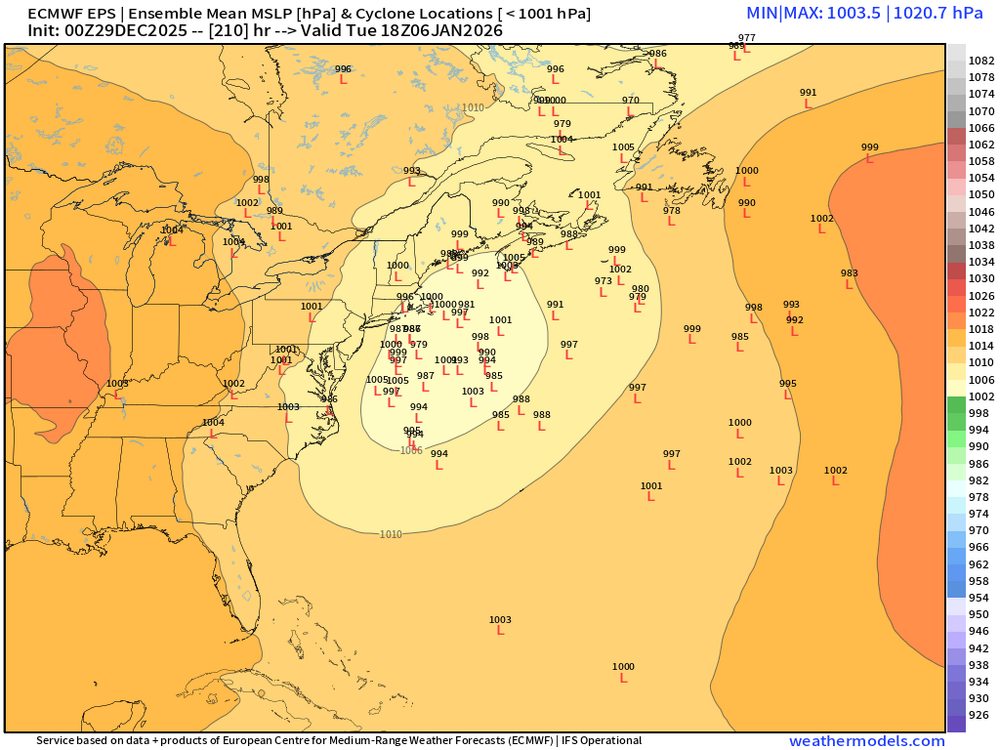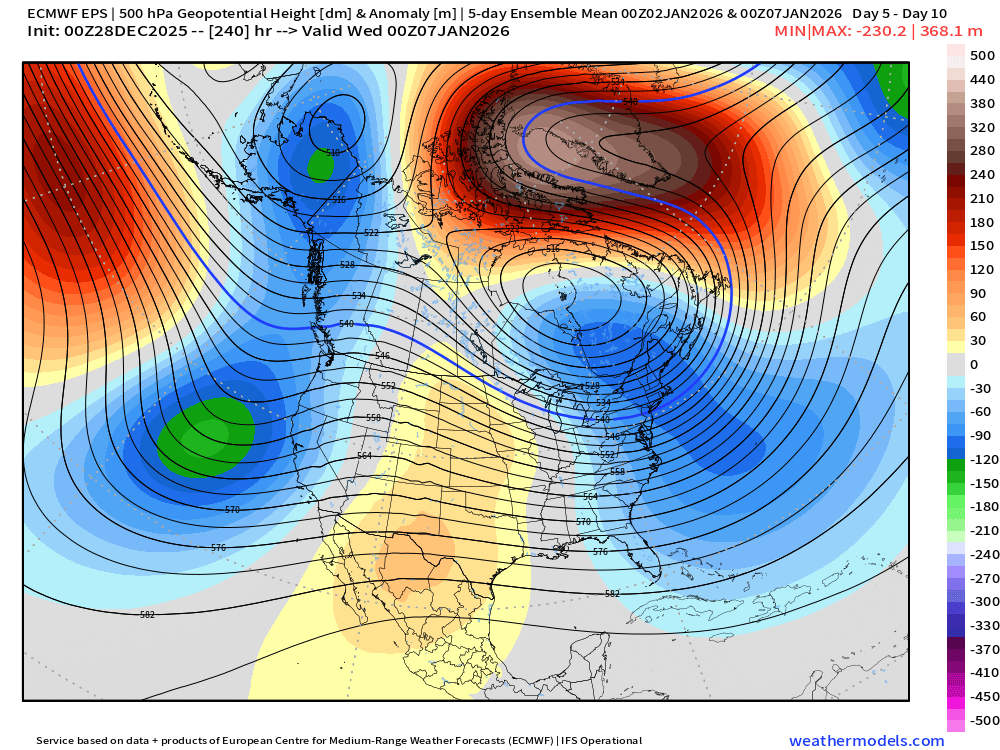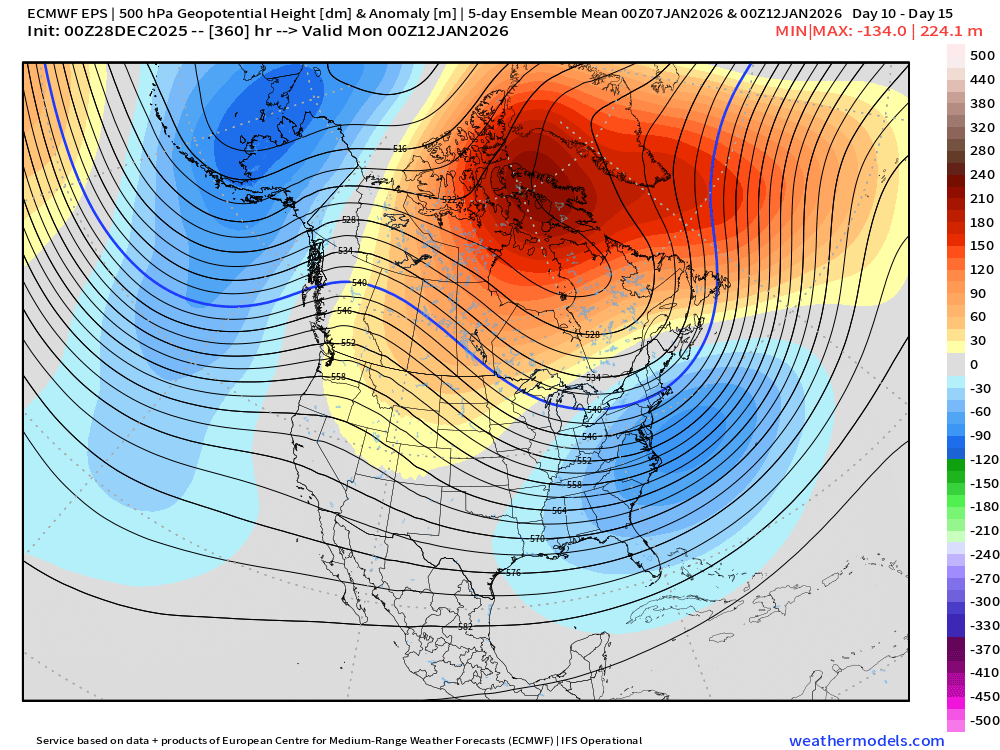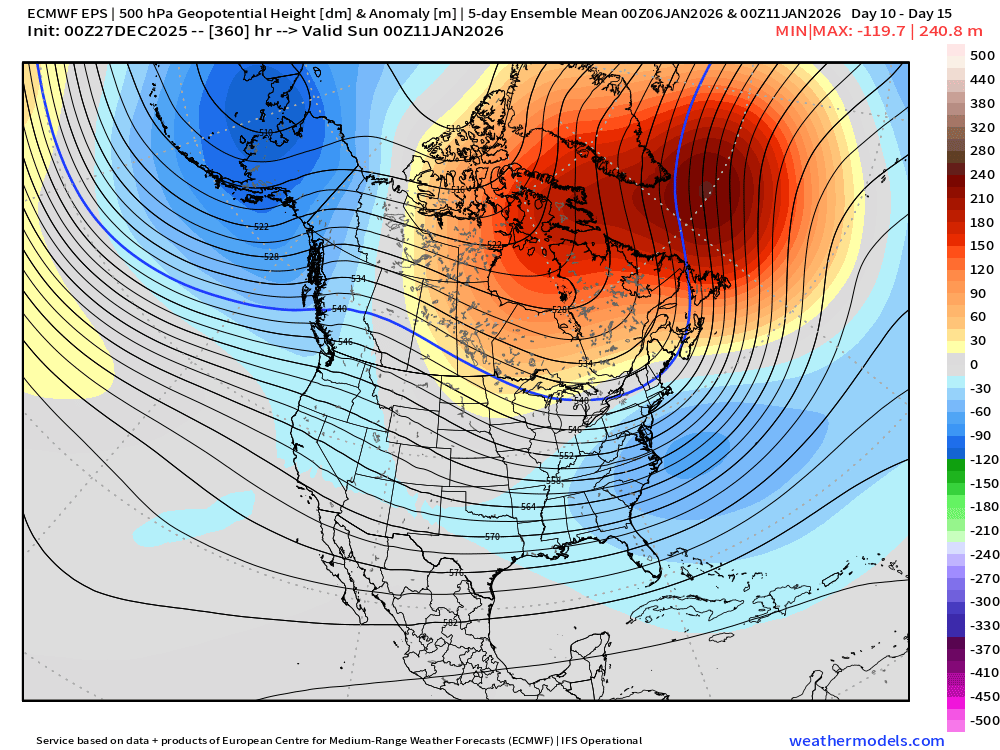-
Posts
91,617 -
Joined
-
Last visited
Content Type
Profiles
Blogs
Forums
American Weather
Media Demo
Store
Gallery
Everything posted by ORH_wxman
-

January 2026 regional war/obs/disco thread
ORH_wxman replied to Baroclinic Zone's topic in New England
Yeah euro still generates a system on 1/8-1/9 but it’s a bit strung out and weak going almost due north and scraping eastern areas. It doesn’t take much mental gymnastics to see that thing being much stronger and more coherent. The PNA ridge is pretty amplified which is going to want to force a lot of energy to pile up around the base of the trough. -

January 2026 regional war/obs/disco thread
ORH_wxman replied to Baroclinic Zone's topic in New England
Yeah the NESIS maps are good for general coverage idea. They are often wayyyyy too conservative in the jackpot regions. The Kocin maps in the book are much better at showing those. -

January 2026 regional war/obs/disco thread
ORH_wxman replied to Baroclinic Zone's topic in New England
1/6 looks decent on Euro today. Moderate 3-6 type event. -

January 2026 regional war/obs/disco thread
ORH_wxman replied to Baroclinic Zone's topic in New England
That New years weak clipper is trying to get slightly enhanced in eastern areas. Wonder if someone can pick up a couple inches. Still just expecting a coating but 1-2 isn’t impossible. -

January 2026 regional war/obs/disco thread
ORH_wxman replied to Baroclinic Zone's topic in New England
Has another period of interest a few days later too. Obviously the further you go out, the more diffuse the mean gets but that’s definitely still something. -

January 2026 regional war/obs/disco thread
ORH_wxman replied to Baroclinic Zone's topic in New England
This is pretty solid for 200+ hours…forget the OP runs for a bit…maybe it doesn’t work out but you have a very definitive signal there -

January 2026 regional war/obs/disco thread
ORH_wxman replied to Baroclinic Zone's topic in New England
Which part of Haverhill? Lol. I think the northern side is where there was 7” of sand. Massive cutoff near there. -

January 2026 regional war/obs/disco thread
ORH_wxman replied to Baroclinic Zone's topic in New England
Oh yeah, I understand it. That’s why I posted it. It is still irrational behavior in an objective/scientific context but I understand why people get panicky about not seeing blizzards on 300 hour OP runs. The lack of success in the KU department recently causes irrational behavior to manifest itself in that manner. I also think the utter glut of storms in the 2010s also produced irrational behavior in terms of expectations. We expected every shortwave to bomb out and give us 8-12” if not something bigger….and for a while, we kept pulling the slot level and ringing up triple 7s. It’s gone the complete opposite direction now but both outcomes are unsustainable. -

January 2026 regional war/obs/disco thread
ORH_wxman replied to Baroclinic Zone's topic in New England
I think that’s placing too much precision on an analog. If all you knew is that we’d get a bomb near the cape with plenty of cold, Wed roll the dice every time and not worry about the nuances. -

January 2026 regional war/obs/disco thread
ORH_wxman replied to Baroclinic Zone's topic in New England
I do…if operational runs aren’t showing 288 hour blizzards, people get antsy regardless of whether the longwave setup looks nice….its a weird manifestation of the last 5 years. Nobody used to give a shit about whether we had 300 hour storms but now a significant portion of the forum gets anxiety over it. It’s probably because of the lack of KUs in that time period. Somehow, seeing them on the OP runs in clown range is some kind of crutch I guess. -

January 2026 regional war/obs/disco thread
ORH_wxman replied to Baroclinic Zone's topic in New England
If DC gets hit big is usually is less impressive here but there’s been plenty that hit us very hard that hit NYC too (Feb ‘78, April ‘82, Jan ‘11, Jan ‘18, etc off the top of my head) -

Ice Ice Baby December 28-29 Storm Discussion
ORH_wxman replied to Baroclinic Zone's topic in New England
Anytime I see 925-950ish going above 0C relatively quickly, I sell big ice accretion. You’d need something super inverted like 20F at the sfc to overcome the warm drops. -

Ice Ice Baby December 28-29 Storm Discussion
ORH_wxman replied to Baroclinic Zone's topic in New England
I hated that storm but always love your account of it. We almost got our pack wiped in that one. Only reason we didn’t was because there was so much sleet and water equivalent in it from like 5 previous high QPF events that had started with the Dec 29-30, 1993 storm. But it was mowed down to about 2” of glacier. -

Ice Ice Baby December 28-29 Storm Discussion
ORH_wxman replied to Baroclinic Zone's topic in New England
This tends to work better when the pack is deep and higher water content. It takes time to heat water…this type of pack prob gets pretty ripe quite quickly once dews reach 38-40F. You're area got a nicer dose of QPF so the valleys there could be tough to wipe out. -

Ice Ice Baby December 28-29 Storm Discussion
ORH_wxman replied to Baroclinic Zone's topic in New England
I dunno, I really think it depends how long temps are above 40F…in your area to my area, there’s a decent chance it wipes the pack. Prob gonna be 12+ hours of 40+ dews. Not a lot of water in the pack either (though my bottom layer from 12/23 is kind of dense). Western CT up into ORH county might keep it though as they spend less time above 40F. If we had like an inch of water in the pack then this wouldn’t wipe it out, but this is not that type of pack. -

January 2026 regional war/obs/disco thread
ORH_wxman replied to Baroclinic Zone's topic in New England
Gonna be a miller B while you’re gone just to give you one more round in Ray’s beast shed. -

Ice Ice Baby December 28-29 Storm Discussion
ORH_wxman replied to Baroclinic Zone's topic in New England
I also don’t think the accretion will be overly efficient in this type of setup. When the cold layer is so shallow like this, the liquid drops are not as supercooled so they won’t freeze as quickly on contact. In icing events where we have robust cold up into the 925-950 layer, that’s when the accretion is usually much more efficient. It prob will start pretty icy but then then it will get pretty marginal. -
-2 at AFN while ORH is 20F. About as fake as it gets, lol. But there will def be some stubborn cold overnight tonight that will cause icy spots.
-

January 2026 regional war/obs/disco thread
ORH_wxman replied to Baroclinic Zone's topic in New England
Looks too flat now for much if anything. Maybe it comes back but I’d forecast flurries right now. Pattern looks pretty awesome though beyond that. Here’s day 5-10 and then day 10-15 respectively on EPS -

January 2026 regional war/obs/disco thread
ORH_wxman replied to Baroclinic Zone's topic in New England
Lock in big miller B for that 1/5-1/6 signal. -

January 2026 regional war/obs/disco thread
ORH_wxman replied to Baroclinic Zone's topic in New England
Where you going? -

January 2026 regional war/obs/disco thread
ORH_wxman replied to Baroclinic Zone's topic in New England
That’s not a particularly cold pattern shown with the lower heights over AK but it’s not a torch for us either because of NAO blocking. It’s occurring during a favorable climatological period too where the averages are already pretty cold. Weeklies have been rebuilding the WPO/EPO ridge after that though which would bring more reinforcing cold air if it verified. -

January 2026 regional war/obs/disco thread
ORH_wxman replied to Baroclinic Zone's topic in New England
Pretty decent pattern as we go into early January. This is a 5 day mean from EPS….note how all the lower heights are now down south. Going to be more receptive to potential coastal storms -

Wounded Duck Strikes Back: Dec 26 & 27th Winter Storm Obs
ORH_wxman replied to WxWatcher007's topic in New England
Actually not in Holliston right now, lol. But it looked pretty good there on radar for a while so I’m guessing 4-5”? -

Wounded Duck Strikes Back: Dec 26 & 27th Winter Storm Obs
ORH_wxman replied to WxWatcher007's topic in New England
They managed to slowly claw their way to 4”+ with additional redevelopment late evening….wasnt pretty and the best was north, but that allowed the event to still be decent there.


